Australian Tropical Rainforest Plants - Online edition
Cryptocarya vulgaris B.Hyland

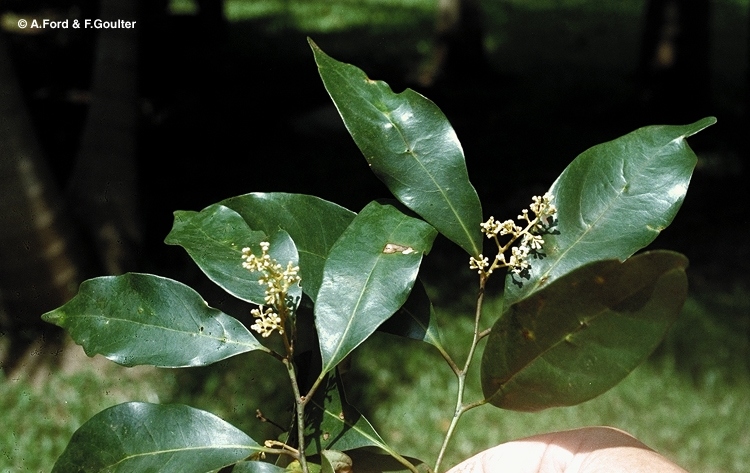
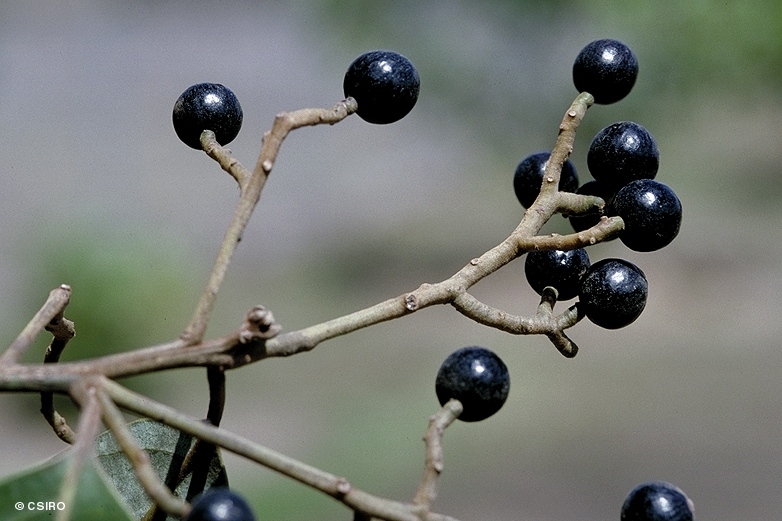

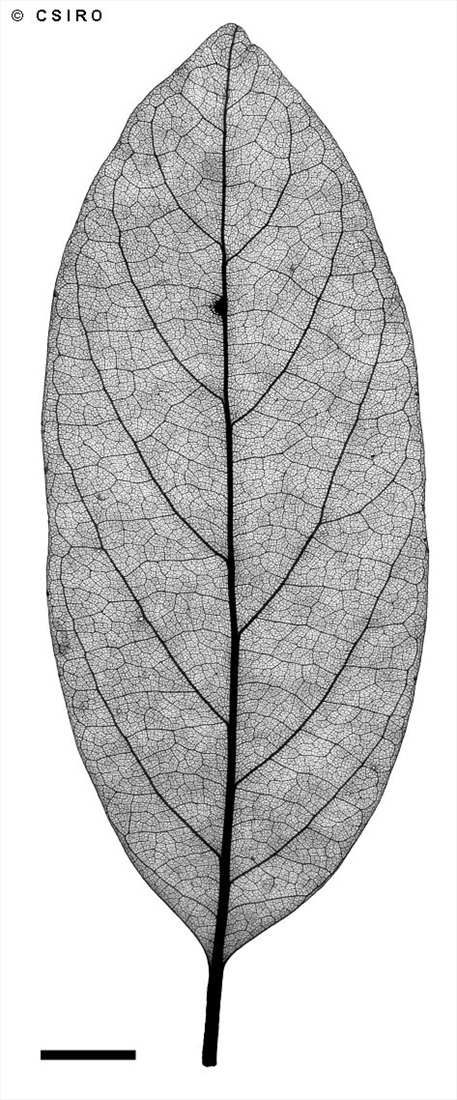
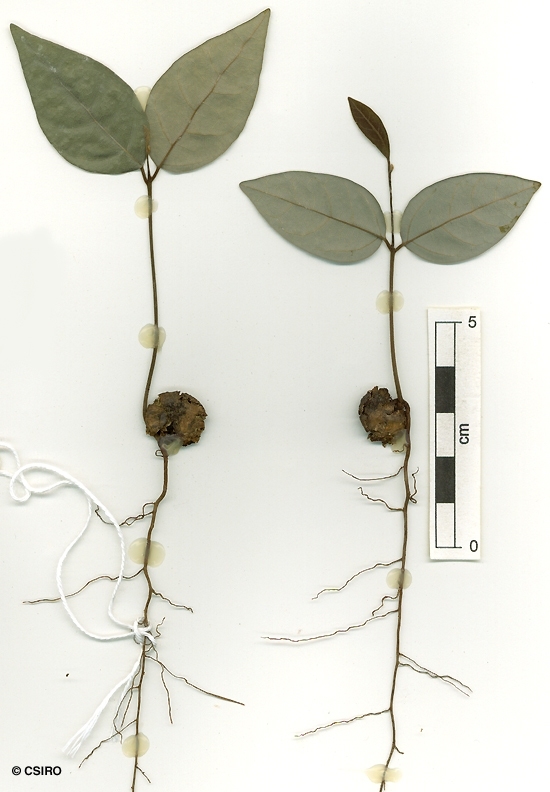
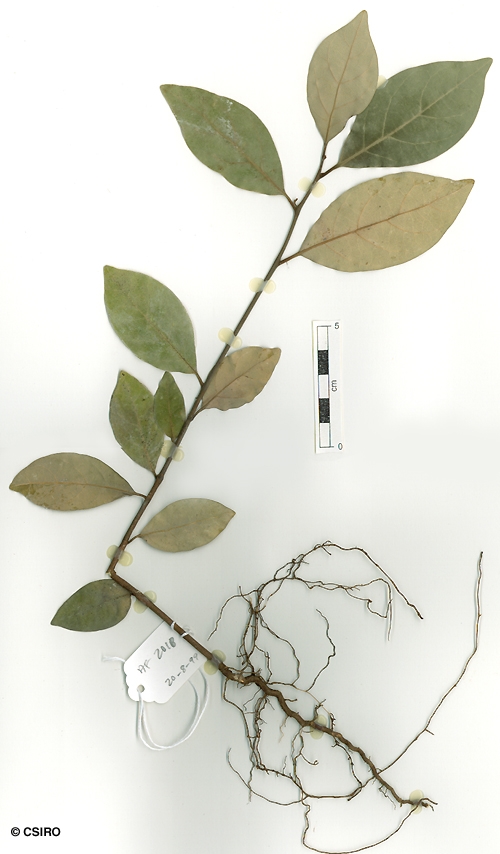
Hyland, B.P.M. (1989) Australian Systematic Botany 2: 212. Type: B. Gray 1367: State Forest Reserve 933, Little Pine Logging Aream 30.iii.1979 (QRS, holotypus).
Northern Laurel; Laurel, Northern
A thin pale brown layer generally visible beneath the subrhytidome layer before the first section of the outer blaze. Blaze odour may be rather spicy.
Twigs fluted, clothed in straight, pale brown, appressed hairs which persist even on fairly old twigs. Leaf blades about 6.5-14 x 2.5-6 cm, glaucous on the underside, clothed in straight, white, appressed hairs when young but eventually becoming almost glabrous. Midrib usually depressed or flush with the upper surface. Petioles channelled on the upper surface. Oil dots visible with a lens.
Fruits usually globular, rarely ovoid or ellipsoid, about 8-13 x 8-12 mm. Cotyledons cream or yellowish.
First pair of leaves ovate, about 25-45 x 15-30 mm, glaucous on the underside. At the tenth leaf stage: leaf blade elliptic, apex acuminate, base cuneate, glaucous on the underside, upper surface of the leaf blade usually glabrous, but a few hairs may occur along the midrib on some leaves. Midrib +/- flush with the upper surface. underside of the leaf blade clothed in short appressed hairs which are visible with a lens. Oil dots very small, difficult to see, visible only with a lens. Crushed roots emit a spicy odour. Seed germination time 35 to 215 days.
Endemic to Queensland, occurs in CYP, NEQ, CEQ and southwards to coastal central Queensland. Altitudinal range from sea level to 850 m. Grows in well developed rain forest on a variety of sites but frequently on the poorer soils derived from granite, acid volcanic and metamorphic rocks.
This species occasionally grows large enough to produce millable logs but it is seldom utilized. Wood specific gravity 0.95-1.00. Hyland (1989).





